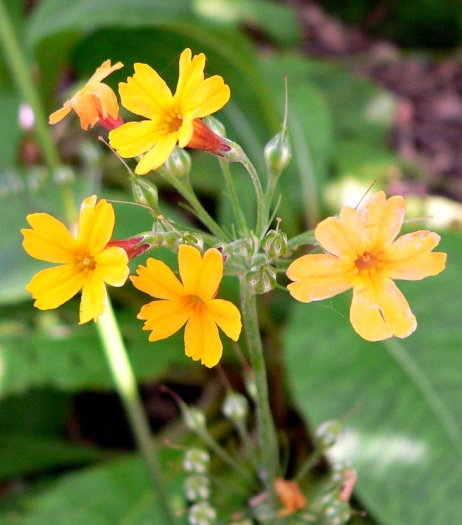Candelabra Primrose
(Primula prolifera)
Candelabra Primrose (Primula prolifera)
/
/

Stan Shebs
CC BY-SA 3.0
Image By:
Stan Shebs
Recorded By:
Copyright:
CC BY-SA 3.0
Copyright Notice:
Photo by: Stan Shebs | License Type: CC BY-SA 3.0 | License URL: https://creativecommons.org/licenses/by-sa/3.0 | Uploader: Stan Shebs | Publisher: Wikimedia Commons | Title: Primula_prolifera_1.jpg | Notes: {{Information |Description={{en|1=''[[Prosartes hookeri]]'', Benton County, Oregon, USA. {{cc-by-2.0}}{{flickrreview}}}} |Source=originally posted to '''[[Flickr|Flickr]]''' as [http://www.flickr.com/photos/scottzona/3061989640/ Prosartes hookeri] |Autho |















Estimated Native Range
Summary
Primula prolifera, commonly known as Candelabra Primrose or Glory of the Bog, is an evergreen perennial herb native to moist, humus-rich, and acidic soils along stream banks and in open woodlands of China and Bhutan. It typically grows to a height of 60-75 cm (24-30 in) with a similar spread. The plant forms a basal rosette of spoon-shaped, simple leaves, and in late spring to early summer, it produces striking tiered whorls of golden yellow, fragrant flowers on erect stems, which are highly attractive to pollinators. Each whorl contains multiple flowers, each measuring about 2.5 cm across, creating a candelabra-like effect that is quite showy.
Candelabra Primrose is celebrated for its unique flower structure and has earned the Royal Horticultural Society’s Award of Garden Merit. It is often used in bog gardens, waterside plantings, and moist borders, providing a bright splash of color and a naturalistic feel. It requires consistently moist soil and can tolerate full sun to part shade, though in hotter climates, it prefers some afternoon shade to prevent scorching. While it is generally easy to maintain, it can be susceptible to slugs and snails, which may damage the foliage. It is not known to be invasive and does not have aggressive roots, making it a safe choice for most garden settings. Propagation is typically done by division after flowering.CC BY-SA 4.0
Candelabra Primrose is celebrated for its unique flower structure and has earned the Royal Horticultural Society’s Award of Garden Merit. It is often used in bog gardens, waterside plantings, and moist borders, providing a bright splash of color and a naturalistic feel. It requires consistently moist soil and can tolerate full sun to part shade, though in hotter climates, it prefers some afternoon shade to prevent scorching. While it is generally easy to maintain, it can be susceptible to slugs and snails, which may damage the foliage. It is not known to be invasive and does not have aggressive roots, making it a safe choice for most garden settings. Propagation is typically done by division after flowering.CC BY-SA 4.0
Plant Description
- Plant Type: Herb
- Height: 2-4 feet
- Width: 2-3 feet
- Growth Rate: Moderate
- Flower Color: Yellow
- Flowering Season: Spring, Summer
- Leaf Retention: Evergreen
Growth Requirements
- Sun: Full Sun, Part Shade
- Water: High
- Drainage: Slow
Common Uses
Bee Garden, Bird Garden, Butterfly Garden, Deer Resistant, Fragrant, Hummingbird Garden, Low Maintenance, Rabbit Resistant, Rock Garden, Showy Flowers
Natural Habitat
native to moist, humus-rich, and acidic soils along stream banks and in open woodlands of China and Bhutan
Other Names
Common Names: Glory-Of-The-Marsh, Sumpviva
Scientific Names: , Primula prolifera, Primula imperialis, Aleuritia imperialis, Aleuritia khasiana, Aleuritia prolifera, Cankrienia chrysantha, Cankrienia formosa, Primula khasiana, Primula sumatrana,
GBIF Accepted Name: Primula prolifera Wall.